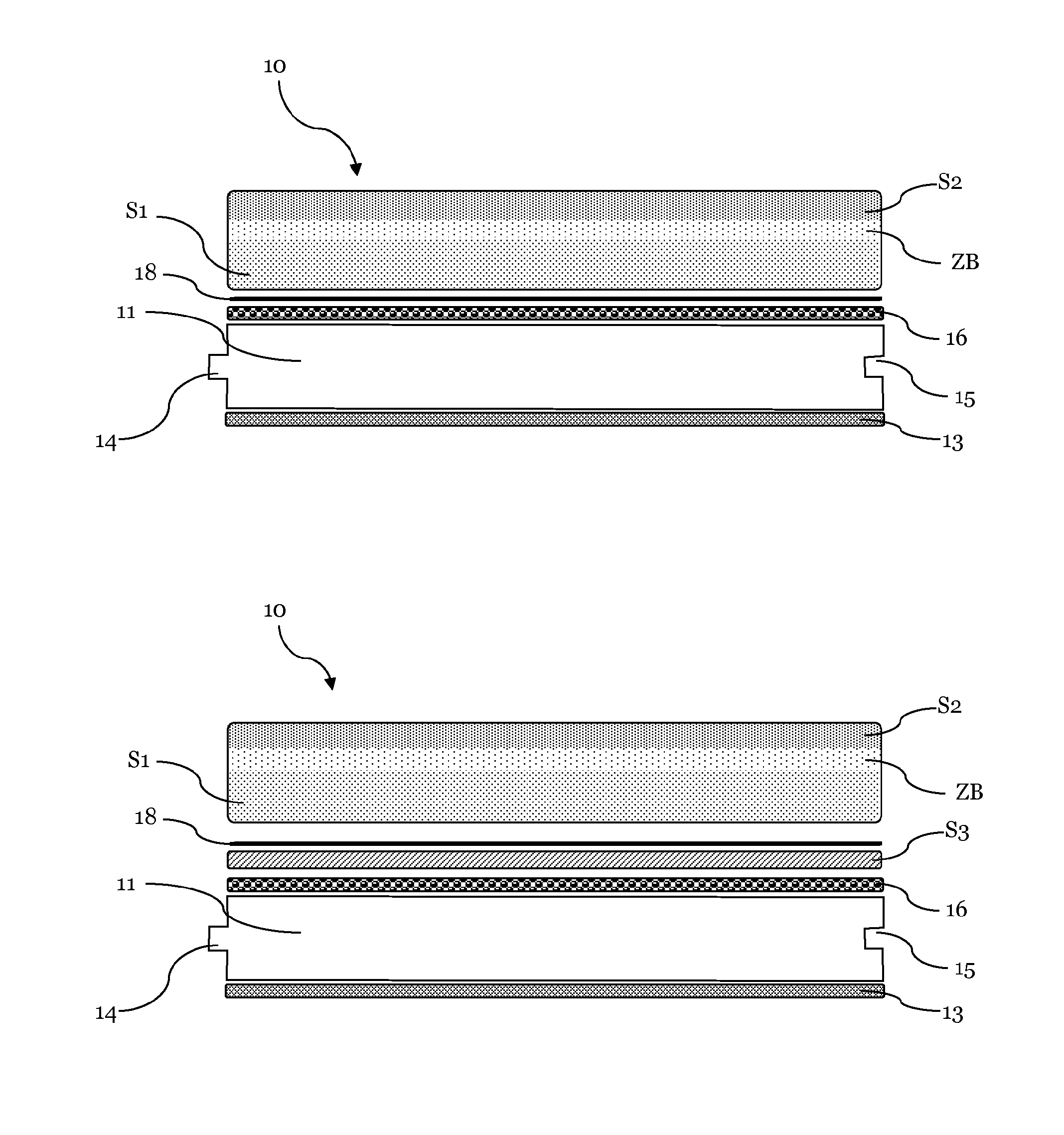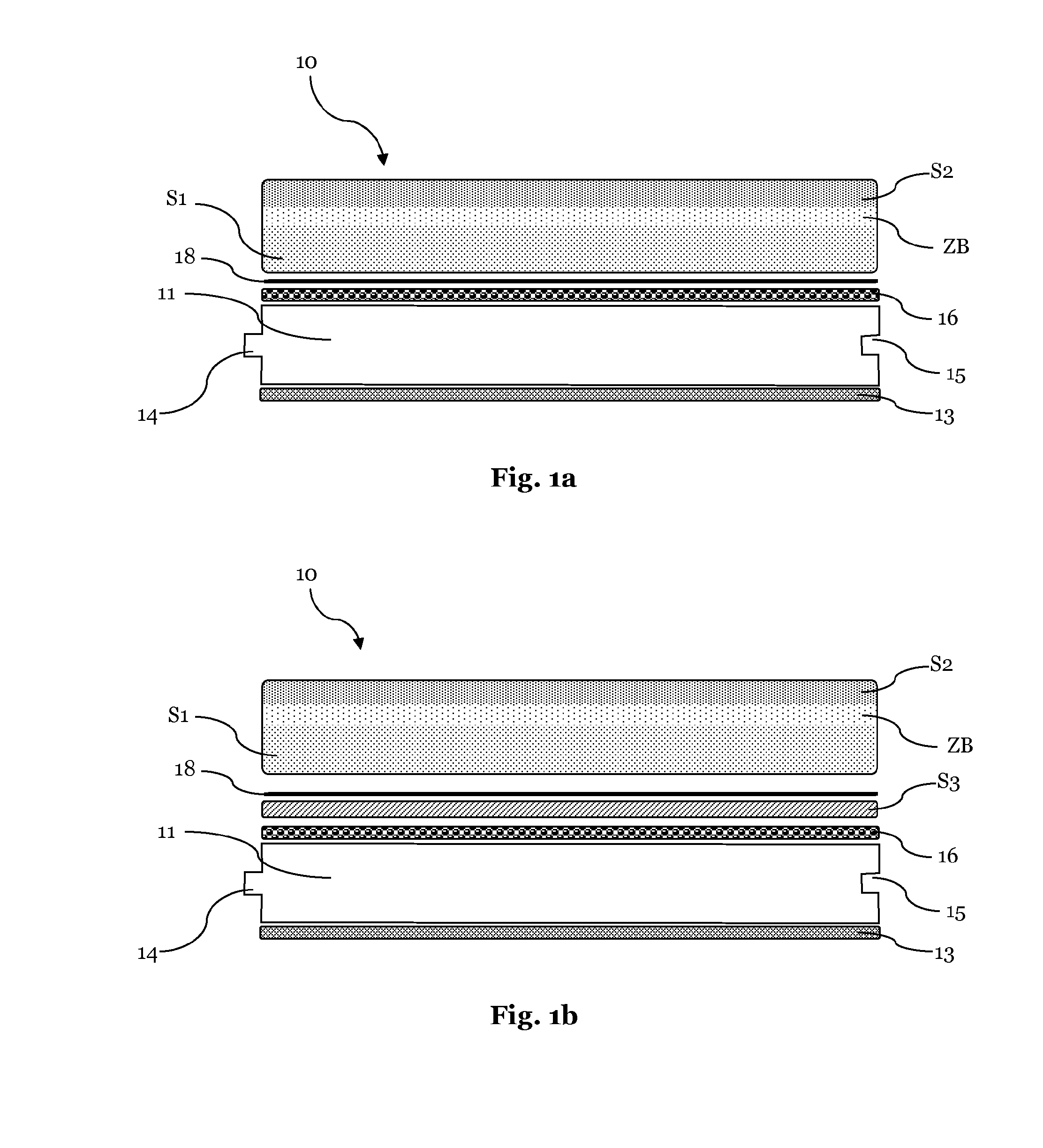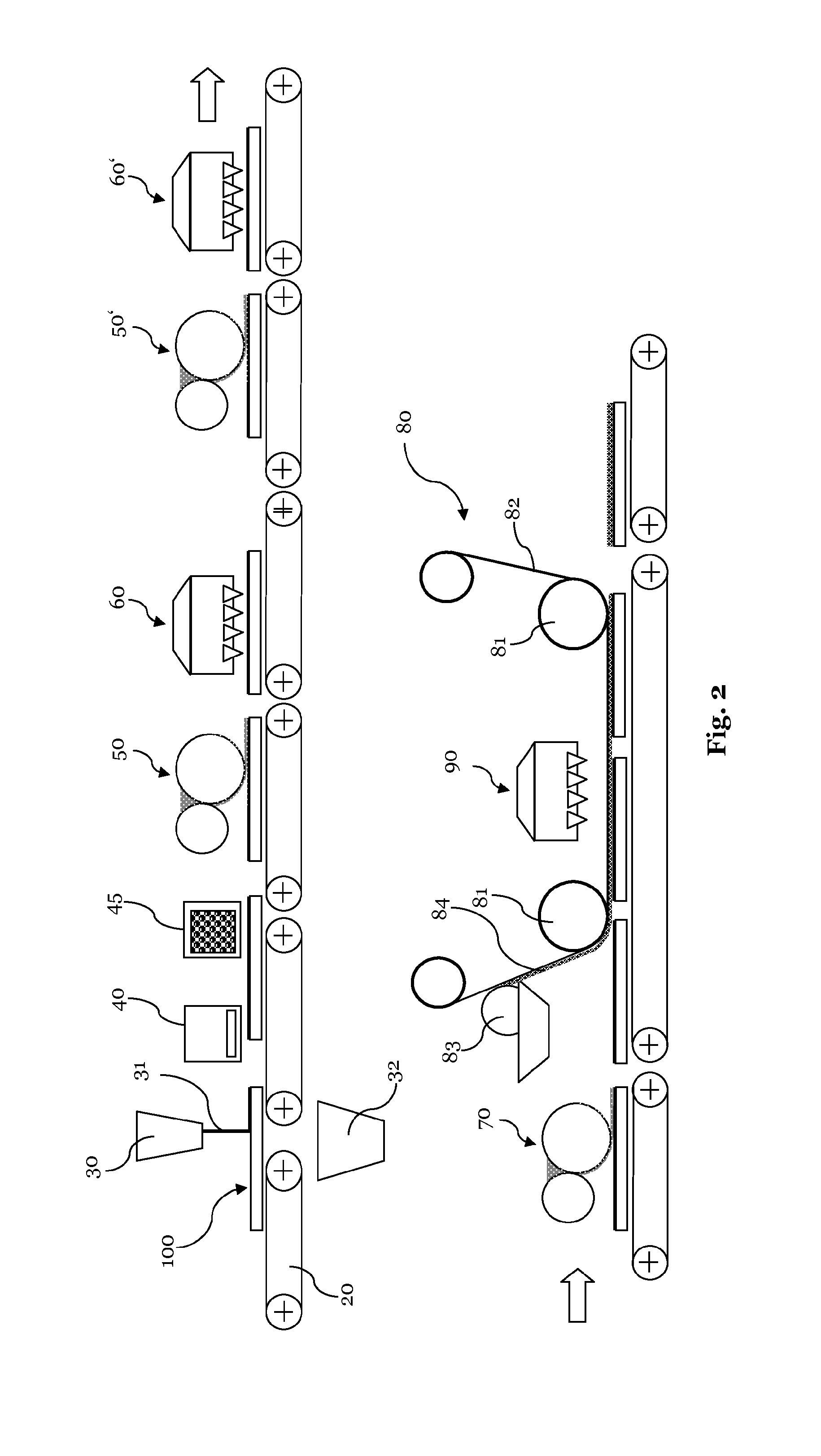Method for producing a directly printed panel
a technology of printed panels and panels, applied in the field of panels, can solve the problems of annoying running noises, inconvenient use, and high cost of pvc floors, and achieve the effect of substantially more expensive than conventional laminate panels
- Summary
- Abstract
- Description
- Claims
- Application Information
AI Technical Summary
Benefits of technology
Problems solved by technology
Method used
Image
Examples
example 1
[0032]In a first step, an HDF-support plate with a thickness of 8 mm is provided with a primer by a roller application work based on a commercially available aqueous acrylic dispersion with an application of 10 g / m2. In a next step, the smoothing of the plate takes place by a roller application work by means of a filler (“Spachtelmasse”) based on a highly filled aqueous acrylic dispersion with an application amount of 25 g / m2. Subsequently, a printing ground (“Druckgrund”) (primer, “Grundierung”) is applied on the basis of an aqueous acrylate dispersion which is offset with fillers and color pigments by means of a casting method (“Gieβverfahren”) (i.e. a curtain coating method, “Vorhangbeschichtungsverfahren”) in an amount of 70 g / m2. After each of these coating steps an intermediate drying takes place at temperatures between 80 and 200° C. The thus treated plates are supplied to a printing machine essentially consisting of an engraved printing roller (“Gravurwalze”) and a rubber ro...
example 2
[0033]Panels, in which the printing image is generated by radiation-curing printing inks.
[0034]Again a 8 mm thick HDF-support plate is used and is provided with an aqueous primer, filler and printing base as described in example 1. The same decorative image is generated on the treated plate by means of a digital printer as described in example 1. Here, however, no dispersion colors are used, but UV radiation-curing digital printing inks. A color amount of about 2 g / m2 is required for the generation of the printing image. The color is initially fixed with 150 mJ / cm2 (mercury). Thereafter the application of 2 g / m2 of a commercially available UV-primer takes place. In this non-irradiated layer is a double bond-containing oligomer (1) provided with photoinitiators applied as in example 1 and this layer is cured together with the ink, i.e. polymerized by UV-radiation. Then the further layers are applied as in example 1. The resulting polymer layer comprises the printing ink and all layer...
example 3
[0035]An HDF-plate is subject to the production stages until after the printing machine as in example 1. A commercially available aqueous UV-primer is applied on the tried printing ink. The plate is heated by the upstream process with a surface temperature of 50-60° C. so that the water of the primer on the surface evaporates quickly and the primer is fixed. Subsequently, an oligomer mixture (1) as described in example 1 is applied in an amount of 50 g / m2 by means of a roller work and gelled by means of UV-radiation. Thereafter, a second roller application of 50 g / m2 of this oligomer mixture (1) takes place followed by gelling and finally a third application (1) of 50 g / m2 followed by gelling. Again, the same oligomer (1) is applied in an amount of 80 g / m2 by means of a further roller application work on this partially cured layer, which corresponds to the layer S1, and thereover the further layer is applied wet-on-wet by means of a film calender in an amount of 30 g / m2 and cured by...
PUM
| Property | Measurement | Unit |
|---|---|---|
| thickness | aaaaa | aaaaa |
| thickness | aaaaa | aaaaa |
| thickness | aaaaa | aaaaa |
Abstract
Description
Claims
Application Information
 Login to View More
Login to View More - R&D
- Intellectual Property
- Life Sciences
- Materials
- Tech Scout
- Unparalleled Data Quality
- Higher Quality Content
- 60% Fewer Hallucinations
Browse by: Latest US Patents, China's latest patents, Technical Efficacy Thesaurus, Application Domain, Technology Topic, Popular Technical Reports.
© 2025 PatSnap. All rights reserved.Legal|Privacy policy|Modern Slavery Act Transparency Statement|Sitemap|About US| Contact US: help@patsnap.com



